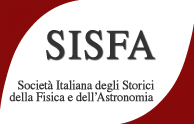Speaker
Description
Questa relazione prenderà in esame le tesi fisico-cosmologiche del De stella nova (1606) di Kepler nel contesto delle discussioni sulla natura delle 'novità celesti’ (comete e nuove stelle) e sui loro moti. Al centro dell’attenzione sarà la discussione critica di alcune tesi sulla natura fisica e i moti della nova che lasciavano aperta la possibilità che l’universo fosse infinito. La risposta di Kepler a queste ipotesi, che rimandavano pericolosamente alla filosofia di Giordano Bruno, chiama in causa alcuni punti centrali del dibattito cosmologico dell’epoca, quali la centralità e la singolarità del sistema solare, la teoria delle comete ('corpi evanescenti'), e la revisione della fisica celeste aristotelica (in particolare la distinzione tra moti retti e circolari).
This paper will discuss some physical and cosmological aspects of Kepler’s De stella nova (1606) in the wider context of the sixteenth and early-seventeenth century debates on the 'celestial novelties' (comets and new stars) and on their motions. In particular, the paper will address issues related to the physical nature and the motions of the new star that paved the way to the notion of the infinity of the universe. Kepler’s arguments against these hypotheses (whose implications led to the 'dangerous' philosophy of Giordano Bruno) call into questions the main issues of the early modern cosmological debate, namely the centrality and singularity of the solar system, the theory of comets (as 'evanescent bodies') and the reconsideration of Aristotle’s celestial physics (the distinction between rectilinear and circular motion, in particular).

